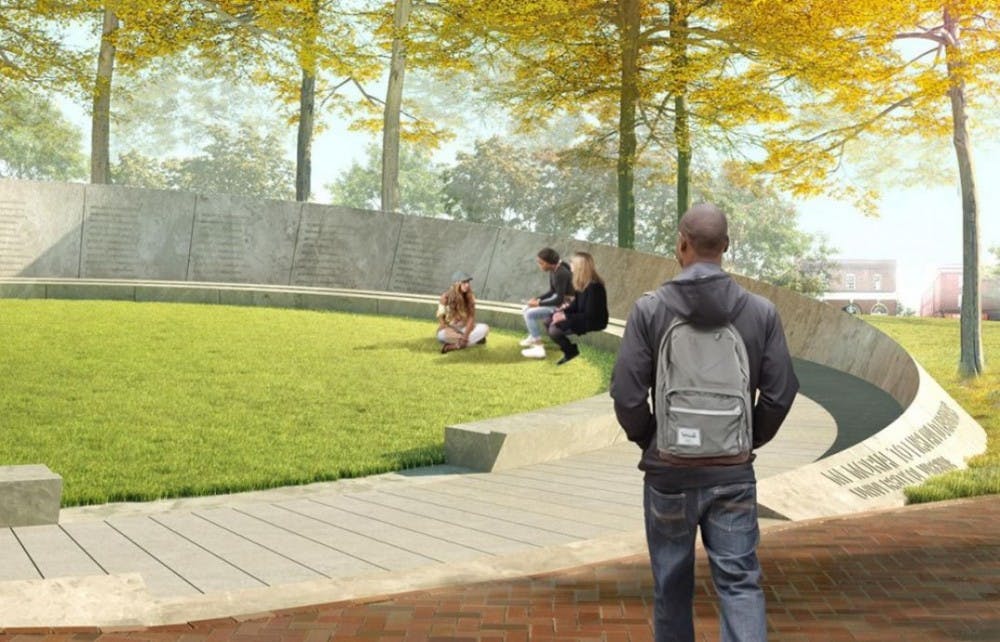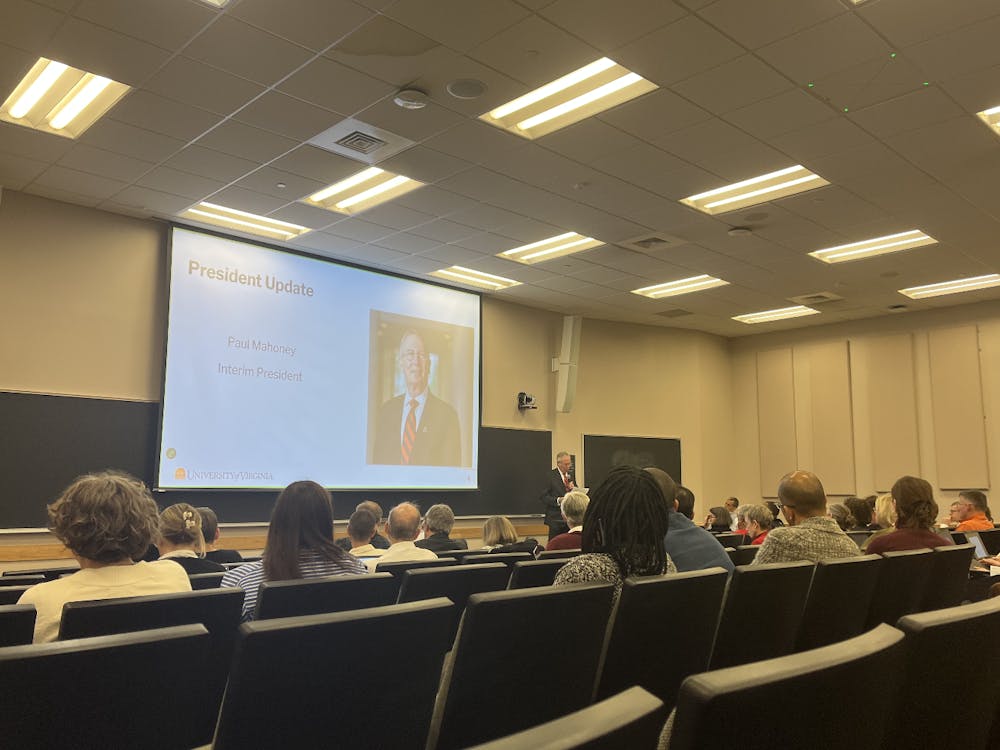The University hosted a panel discussion at the Rotunda Saturday to explore the University’s ties to slavery and emancipation, as well as to provide updates to the ongoing Memorial to Enslaved Laborers project, estimated to be completed by fall 2019. Speakers centered on the role of memory in promoting a more inclusive view of history at the University and the ways in which the planned memorial aims to support this goal.
University Rector Frank M. “Rusty” Conner III said the memorial was a vital part of redefining U.Va.’s history. He added that the memorial was a component of a much broader effort on behalf of the University to address its history, as documented in the recently completed report from the President’s Commission on Slavery and the University.
The report suggests ways the University can facilitate understanding about its history, including expanding the Cornerstone Summer Institute, a history-based summer program for high schoolers, renovating McGuffey Cottage — a former residence for enslaved laborers — and establishing a research endowment to support the University’s “evolving understanding of its early history.”
The commission behind the report — established by former University President Teresa Sullivan five years ago — aims to “engender a national conversation about our own past, one that moves beyond campuses and changes general public understandings,” according to the report.
According to the report, the memorial is projected to cost an estimated $6 million, with completion planned for Fall 2019.
“The President’s Commision on Slavery and the University began in earnest for this university the search for our past so that we could bring greater completeness to our history,” Conner said. “What’s led us to engaging the community in discussions is to how best to remember and honor the enslaved laborers who did so much to make this University a reality.”
Conner added that while the memorial will be a major step for the University in acknowledging and grappling with its racist history, it will only be part of a broader reconciliation effort.
“When the Memorial to Enslaved Laborers is completed in the fall of 2019, we will have taken a singularly important, but not complete step, in bringing to light the lives of so many important to our past and present, but not previously recognized by our history,” he said.
The first half of the event featured a panel discussion moderated by Elizabeth R. Varon — American history professor and associate director of the John L. Nau III Center for Civil War History. Participating in the discussion was Edna Greene Medford, a history professor and interim dean of the College of Arts and Sciences at Howard University, and Richard S. Newman, a professor of African-American history at Rochester Institute of Technology.
The speakers focused primarily on the role played by key abolitionist figures Frederick Douglass and Abraham Lincoln before and during the Civil War in the long fight for emancipation, as well as how their actions intersected with events in Charlottesville and at the University during this time.
The University, situated on land initially belonging to the local Monacan Native American tribe with many of its original buildings built by slaves, has a complex legacy with slavery. Following the signing of the Emancipation Proclamation in 1863, slavery only ended in Charlottesville two years later with the surrender of the Confederacy in 1865.
“Would this place, would Jefferson's Rotunda, the University of Virginia, would it have been a World Heritage Site if there was no emancipation, if there was no black struggle?” Newman asked in response to a prompt from Varon about the role of memory and legacy. “A memorial is wonderful, it gives voice to those who were silenced, it allows people kind of a place to reflect and think and so I think that it’s absolutely amazing that the … monument is being created here. But a monument can only do so much. It should only be a start.”
Following the discussion, the panelists accepted additional questions from the audience. One in particular focused on the role memory will play 50 to 60 years in the future.
“My hope is that in 50 to 60 years we still have a country that we can look back on with some kind of pride,” Medford said. “Because we are at a crossroads now and the road we go down is extremely important … Whatever your view is about what we should be doing, you’ve got to be active, you’ve got to be out there helping us define what it is.”
The memorial designers, Eto Otitigbe, a polymedia artist and assistant professor of art at Brooklyn College, N.Y. and Meejin Yoon, a professor, architect and former head of the architecture department at the Massachusetts Institute of Technology, also delivered a presentation on the latest plans for the memorial.
The designers spoke at length about the inspiration behind the memorial project and the construction process and displayed a number of mockups and artist renderings of what the monument will eventually look like.
“In addition to recognizing the horror and injustice, the memorial also asks how can we not only make visible the history, but honor those who were enslaved and contributed to … the Grounds, as well as a portion of the building and the creation of the University,” Yoon said. “And then how can we recognize the humanity of the enslaved and also honor their resilience and overcoming what they had to endure?”
Featuring a unique open circular design, the monument will be carved with the names of the roughly 5,000 enslaved people believed to have assisted in the original construction of the University and will sit within the “Triangle of Grass” along University Avenue between the Rotunda and Brooks Hall. Enslaved individuals for whom no name is yet known will be represented by a carved slash.
“It is an open memorial that hopefully continues in the education, learning, the coming together of the community … the academic community and the residential community, here not only in Charlottesville, but nationally, to continue the work that needs to be continued to bring equity and justice to all,” Yoon added.
Additionally, as an extended part of the event, copies of the original Emancipation Proclamation and 13th Amendment signed by Abraham Lincoln will be on display in the Rotunda’s North Oval Room until Tuesday. Afterward, they will be moved to the Special Collections Library for a second exhibition with other documents until Oct. 22.
Saturday’s event was sponsored by the Office of the Vice President and Chief Officer for Diversity and Equity, the President’s Commission for Slavery and the University, the Rotunda, the John L. Nau III Center for Civil War History, the University Bicentennial and the U.Va. Library.







